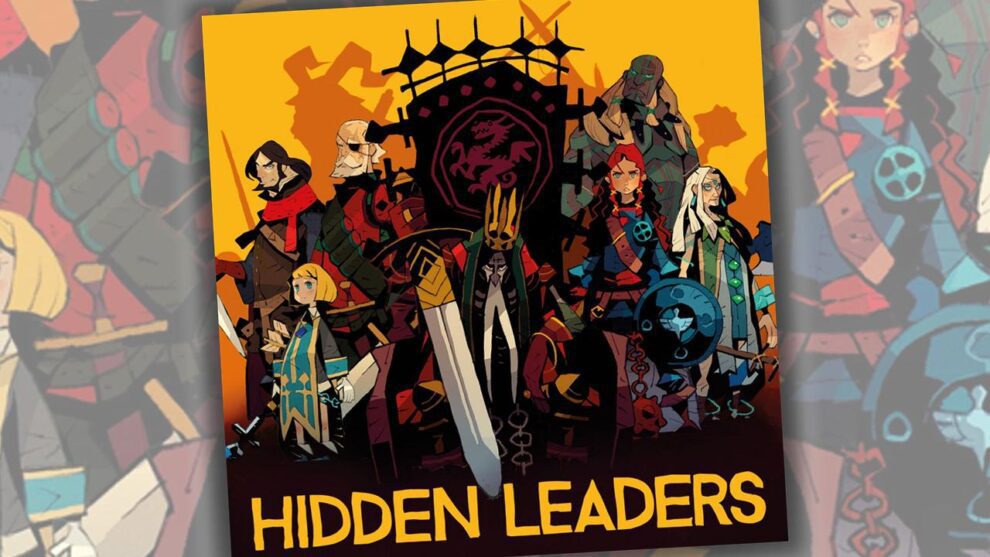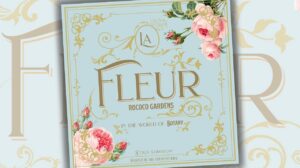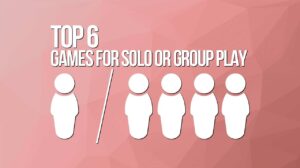I am not really sure, most of the time, what it is that draws me in and makes me want to get and play a new game. Sure, in my youth, the idea of someone suggesting a game and introducing it to me certainly was a factor. But now that I am seeking out games (both board and role-playing), it is the oddest things that grab my attention. Back in 2022, I was immediately hooked on the game Hidden Leaders when I saw this image online:

I mean, look at this guy! He is a confident and self assured individual. There are a few meanings for the word ‘queer’ but none of the definitions that fall outside of ‘gay’ seem to apply. As an ally, and someone with many friends and family in the LGBTQIA+ community, this is the sort of character I can get behind! I got a copy for me, and one for one of my old Navy buddies (who happens to be gay). I have never regretted this purchase, because beyond the wonderful artistic style of the game comes great game play as well.
Overview
Hidden Leaders is a card-driven board game where two armies are vying for power:
- The Imperial Army (red)
- The Hill Tribes (green)
However, there are two other factions:
- The Water Folk (blue) want to keep the power balance between the two armies so that they are too busy dealing with each other they do not have time to interfere with what they are doing.
- The Undead (black) want the war to escalate to the point that the dead can be risen and become dominant.
At the start of the game, each player is dealt a leader. This is a secret – the game is called Hidden Leaders, after all. Each leader has two of the four factions they are allied with.
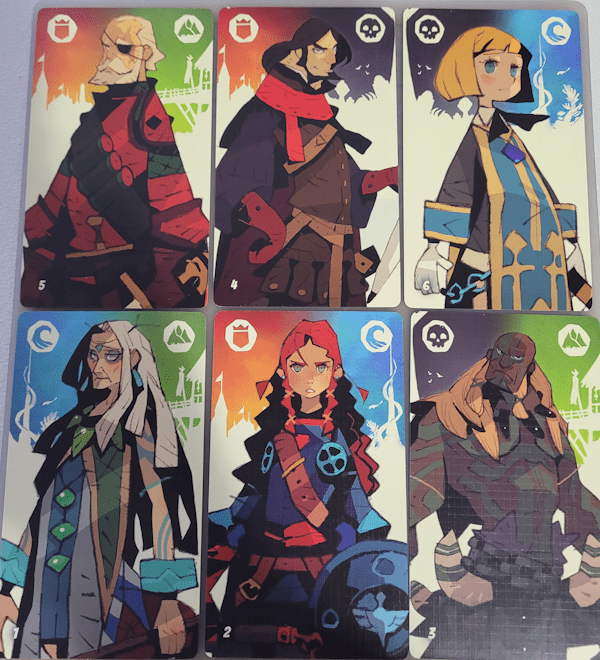
Each player is trying to ensure that, at the end of the game, the faction that has won the war is one of the two factions their leader represents. So how do you do this?
To start, the Imperial Army and the Hill Tribes start the game on the game board with a power of 4. This will fluctuate a lot as the game progresses.
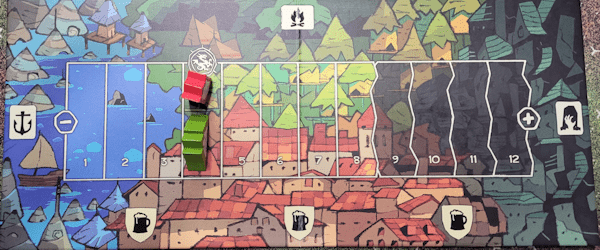
A special card called The Buried Emperor is placed to the right of the board. This area is called the graveyard (as indicated by the symbol of the hand coming out of the ground in front of a tombstone).
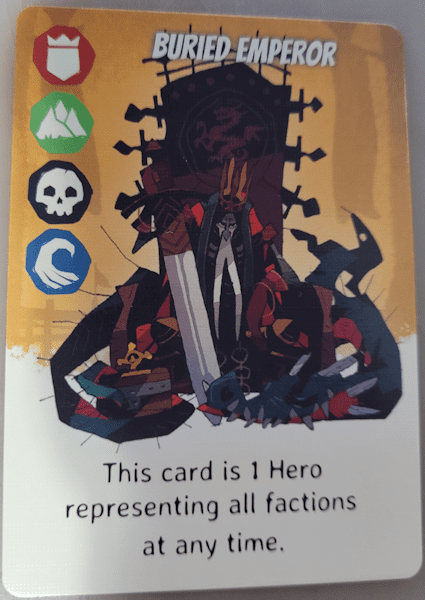
Next, the rest of the deck is shuffled and placed to the left of the board. This area is called the harbor (as indicated by the symbol of the anchor).
The top three cards are drawn and each is placed under the board. This area is called the tavern (as indicated by the three beer steins, one for each hero placed there).
Then, each player is dealt a hand of five cards. They perform the following actions:
- Place one of these heroes face down in their play area. This hero is in their party and is a part of their forces, but they are not known to the rest of the players.
- Discard one of these heroes face down into a pile at the top of the board. This area is called the wilderness (as indicated by the symbol of the campfire).
- The remaining three heroes make up their starting hand.
Choose a player as the start player, and the game can begin.
The Heroes
Each hero represents a faction. They also have an ability that is triggered when played. Depending upon the hero, this can mean moving the tokens representing the power of the Imperial Army and/or the Hill Tribes on the board, drawing more cards, moving heroes to and from the graveyard, or gaining face-down heroes, etc.. Some example heroes:
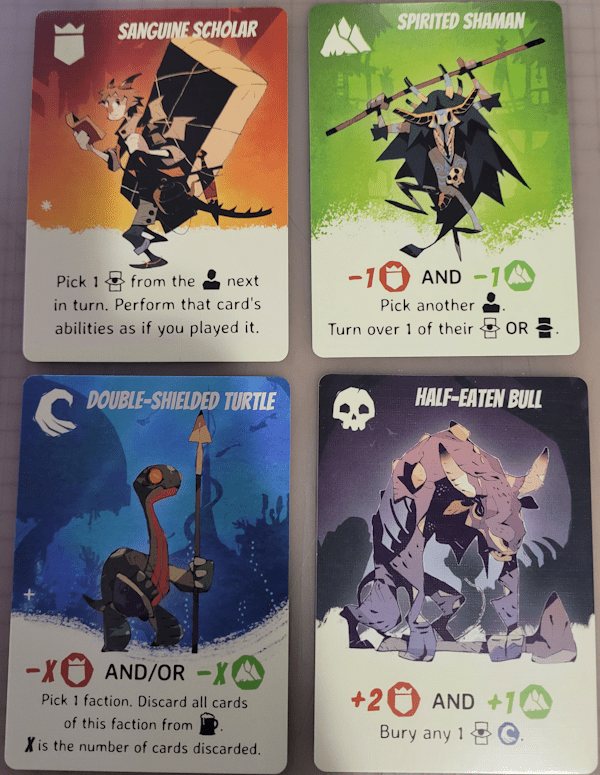
Turn Sequence
On a player’s turn, they perform the following actions:
- Play one hero from their hand face-up (activating its abilities), or discard up to three heroes to the wilderness.
- Draw from the tavern and/or harbor until they have 4 cards in hand.
- Discard one card into the wilderness.
- Refill the tavern so that it has three heroes available.
Please look closely at steps 2 and 3. They comprise a beautiful part of this game! A player can draw cards from the tavern (which the other players can see), but they always draw one more than they can keep. This means that if there is a card the player does not want an opponent to take, they can grab it. But then they have to go back down to the normal hand of three cards. Did the player discard this card or that one? Nobody is sure – so nobody can say for certain which cards that were drawn remain in the player’s hand. It is quite clever, if you ask me.
End of the Game
Players continue doing this, taking turns, adjusting the power levels of the two armies until a player ends their turn with any player having a specific number of face-up heroes.
- 2 players – 8+ heroes
- 3 players – 7+ heroes
- 4 players – 7+ heroes
- 5 players – 6+ heroes
- 6 players – 5+ heroes
At this point, it is time to determine which faction won the war. To do this, check the following conditions in order:
- The Undead win if both the Imperial Army and the Hill Tribes markers are in the dark area of the board (power levels 9-12). If either or both markers are not in this area, the Undead did not win the war.
- The Water Folk win if the Imperial Army and the Hill Tribe markers are within one power of each other (e.g., at the same power level, or at adjacent levels). If the markers are more than one space from each other, the Water Folk did not win.
- If the two conditions above did not determine a winner, the winner is the army with the most power (e.g., either the Imperial Army or the Hill Tribes).
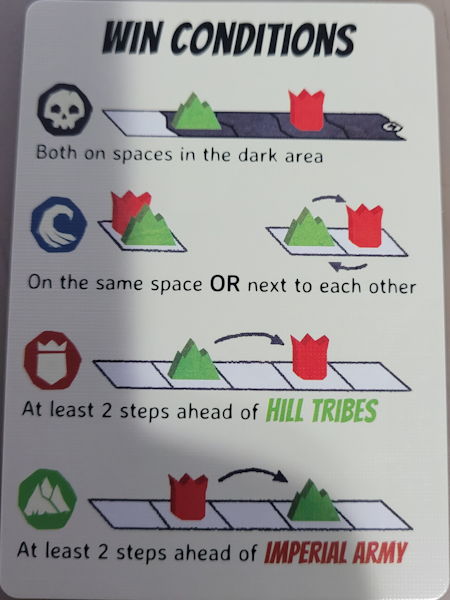
So which player won the game? Once the winning faction is determined, the players all reveal their hidden leader. Any player who’s hidden leader is not allied with the winning faction is immediately eliminated. If only one player’s hidden leader is allied with the winning faction, they win. If more than one player’s hidden leader is allied with the winning faction, it is time to reveal all the heroes that were face down! Each player in contention counts up the total number of heroes they have that are a part of the winning faction, and the one with the most support wins. If there is a tie, the player that has the fewest number of total heroes (regardless of faction) wins.
Thoughts
When I first got this game, I was more than ready to dive in! The gameplay does not disappoint. Each time you are looking at your hand trying to figure out how best to maneuver the power of the armies, or how to take advantage of a particular power – all without giving too much away. The best victories seem to come when your opponents are still trying to guess which factions your hidden leader is supporting.
I was skeptical of how the Water Folk (needing to keep the power of the two armies nearly equal) and the Undead (needing to push the power of the two armies to the extreme) and how they would work. Could this be something that would occur as often as one army being 2+ spaces ahead of the other? In the end, I can say with confidence that these mechanisms work very well. In my experience, each faction has an equal shot at victory.
I have played this at multiple player counts (2-4; have not yet been able to get a group of 5 or 6), and it holds up nicely. I will say that as much as I enjoy this game, this is not one my wife likes, and I have several friends that just think it is ok. My wife feels that the tug-o-war represented is not very interesting, and a few of my friends feel the strategic or tactical aspects of the game are not as strong as they would like. Tastes vary, I get that. Personally, I like the tug-o-war – as well as the limits that are put on that aspect of the game (i.e., tug too much to the right, or keep the armies close enough, and neither army can win). I find the “two armies, four factions, six leaders” aspect to be one of the more beautiful designs I have seen jn board gaming.
But their concerns are the reason I do not give this game a 5-star rating: it results in a true difficulty when it comes to getting the game to the table. That said, I cannot imagine someone asking if I would like to play this and me saying no. There is nothing about this game I do not love!


